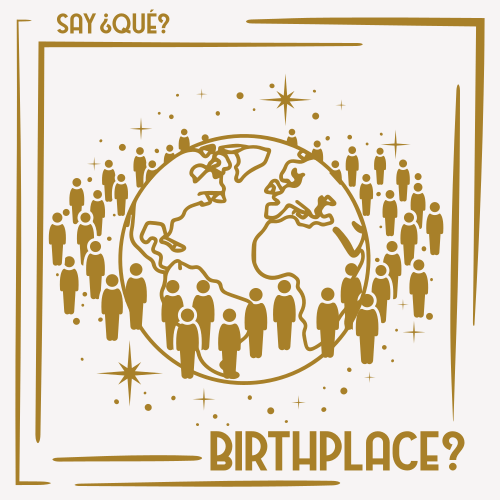Say ¿Qué?: Top Ten Spoken Languages in the State of Washington
Most Spoken Languages in Washington
According to the U.S. Census Bureau,* the top most spoken languages in Washington state were as follows:
English
Spanish
Chinese (includes Mandarin & Cantonese)
Vietnamese
Russian
Tagalog (includes Filipino)
Korean
Afro-Asiatic Languages (includes Amharic, Somali)
Hindi
Austronesian Languages (includes Ilocano, Samoan, Hawaiian)
Other Slavic Languages (includes Ukrainian)
Top Countries of Birth in Washington
The top birthplaces of foreign-born residents of Washington were as follows:
Mexico
China
India
Philippines
Vietnam
Korea
Canada
Ukraine
United Kingdom
Russia
Ethiopia
Say ¿Qué? Multi-Language Design Series
How do you say [<♡>] in your language? To become a true polyglot, one must be proficient in four or more languages! Our Say ¿Qué? designs feature eleven languages! Below are translations for hello and love.
Hello!!!
When translating “hello,” it was less about exact translations and more about learning how people greet each other. There were formal and informal ways of greeting others, depending on one’s familiarity. Often it was more than just a “hello” but an inquiry into their well-being or wishing them well.
Hello [English]
Hola [Spanish]
Nǐ hǎo (你好) [Mandarin]
Xin chào [Vietnamese]
Zdravstvuyte (Zdravstvuyte) [Russian]
Kamusta [Filipino & Tagalog]
Annyeonghaseyo (안녕하세요) [Korean]
Selami (ሰላም) [Amharic]
Namaste (नमस्ते) [Hindi]
Kablaaw [Ilocano]
Pryvit (Привіт) [Ukrainian]
Fun fact: “Kamusta” comes from “¿Cómo está?” Can you hear it?
#TopTenSpokenWashington
Love!!!
Many languages had multiple words for “love” distinguishing between romantic love and a broader sense of love (e.g., for family, friends, etc.).
Love [English]
Amor [Spanish]
Ài (爱) [Mandarin]
Yêu [Vietnamese]
Lyubov' (любовь) [Russian]
Pag-ibig [Filipino & Tagalog]
Sarang (사랑) [Korean]
Fik’iri (ፍቅር) [Amharic]
Pyaar (प्यार) [Hindi]
Ayat [Ilocano]
Lyubov (любов) [Ukrainian]
Whenever we discover a linguistic kinship (e.g., “love” in Russian and Ukrainian), it feels like we unlocked a door to a secret portal... perhaps to our future?
#TopTenSpokenWashington
We strive to build solidarity through the art of translation.
Thank you [Gracias, Xièxiè (谢谢), Cảm ơn, Spasibo (Спасибо), Salamat, Gamsahamnida (감사합니다), Āmeseginalehu (አመሰግናለሁ), Dhanyavaad (धन्यवाद), Aagyaman, Dyakuyu (Дякую)] for reading!
*Data was downloaded from the U.S. Census Bureau and the American Community Survey and confirmed by comparing to Data USA (Washington State (2022)). For each language, we selected the flag of the country of the largest diaspora residing in the state. We determined this by analyzing the birthplace data provided by the U.S. Census Bureau. For example, for the #TopTenSpokenWashginton design, for Spanish, we used the beautiful flag of Mexico. If you have suggestions to help us improve our translations, please let us know via connect@villagevalues.org or our form. Thank you!





























